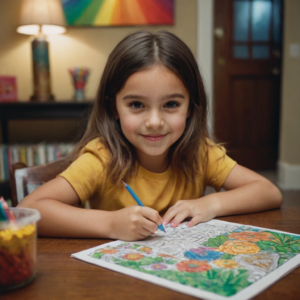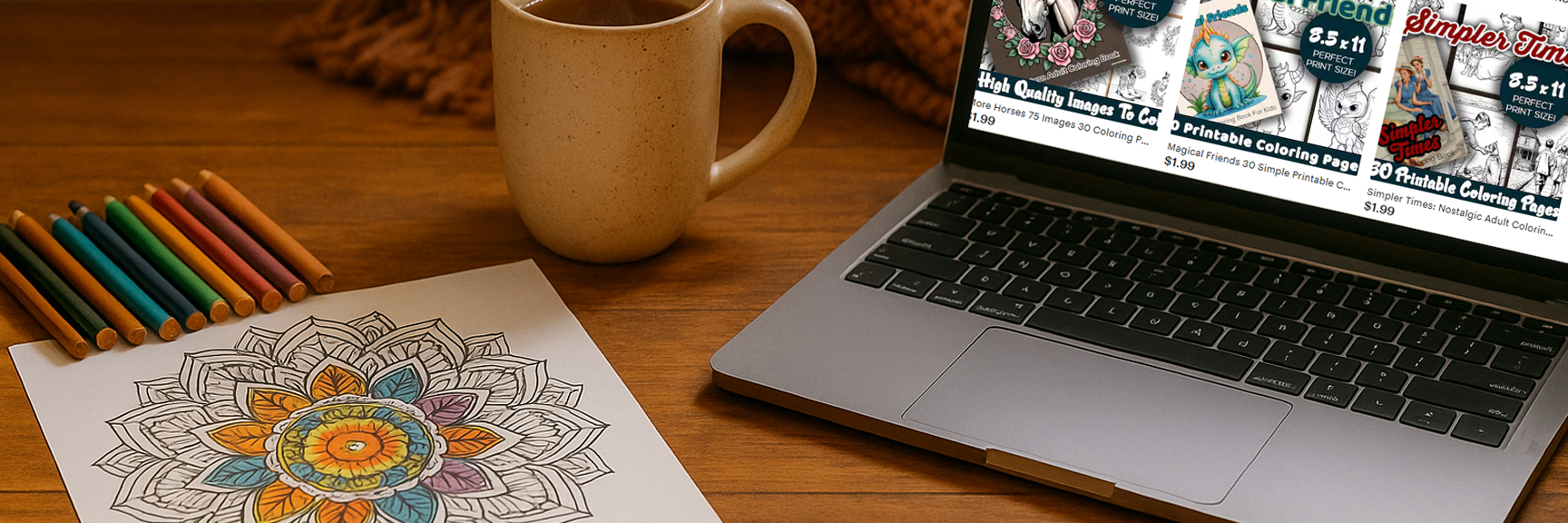Children experiencing emotional challenges, whether due to trauma, anxiety, or behavioral struggles, often find it difficult to express themselves. Traditional therapeutic methods like talking or cognitive-behavioral approaches may not always resonate with them. This is where childrens coloring books come into play as a powerful tool for calming their minds, helping them process emotions, and enhancing their emotional well-being.
In this post, we’ll explore how coloring can help troubled youth, not just as a fun activity but as a way to foster emotional growth, mindfulness, and self-regulation. The simplicity of coloring can unlock deep emotional expression, offering a valuable resource for parents and teachers who want to support children’s mental health in a non-invasive, effective way.
The Power of Coloring: How It Calms and Soothes
Coloring offers a unique opportunity for children to express their emotions without needing to put their feelings into words. For many kids, particularly those who struggle with verbal communication, coloring can serve as an emotional outlet. The repetitive motions involved in coloring have been shown to activate the relaxation response in the brain, reducing anxiety and promoting a sense of calm.
The focus required to fill in the spaces with color can help kids tune out the overwhelming chaos in their minds and external environments. This concentrated activity allows children to stay grounded in the present moment, effectively practicing mindfulness without needing formal instruction. The act of coloring also provides a structured, low-pressure way for kids to calm their minds, helping them to better regulate their emotions.
Research supports the therapeutic benefits of creative activities like coloring. Studies have shown that engaging in artistic activities, including coloring, helps reduce cortisol levels—the body’s primary stress hormone—and increases serotonin production, which promotes feelings of well-being. For children facing difficult emotions, this simple activity can be an effective way to help them regain a sense of control.
 Emotional Expression Through Color: A Non-Verbal Outlet
Emotional Expression Through Color: A Non-Verbal Outlet
For children experiencing emotional trauma, anxiety, or frustration, expressing these feelings verbally can be challenging. When children lack the vocabulary or the emotional maturity to articulate their emotions, they may turn inward or act out in frustration. Coloring provides a bridge between their internal world and external expression, enabling them to externalize feelings in a visual form.
The colors a child chooses and how they use them can reveal a lot about their emotional state. For example, darker, more intense colors may indicate feelings of anger or sadness, while softer, lighter tones may signal a need for comfort or relief. Allowing children to color freely gives them the space to explore their feelings without the pressure of talking about them. This freedom can help them process complex emotions at their own pace.
In therapeutic settings, professionals often use childrens coloring books as a way to observe how a child expresses themselves. The way children interact with color and space can offer valuable insights into their emotional and psychological state. For teachers and parents, encouraging children to color can be a subtle yet effective way to understand and support their emotional needs.
Mindfulness for Troubled Kids: Childrens Coloring Books as a Calming Ritual
For many children, their world can feel chaotic, whether due to family stress, academic pressures, or social challenges. Coloring provides a structured but calming break from this chaos. It’s an activity that requires focus and attention but doesn’t demand perfection. This makes it especially helpful for children who may feel overwhelmed by the pressure of daily life.
Mindfulness techniques have gained recognition for their ability to help children manage anxiety and stress. However, traditional mindfulness practices can be difficult for younger children to grasp. Coloring, however, provides an easy entry point for cultivating mindfulness in kids. The simple act of concentrating on filling a page with color helps children stay in the moment, develop patience, and gain control over their emotions.
In a classroom setting, using coloring as a mindfulness practice can offer children a moment of calm in an otherwise busy day. For parents, introducing coloring as part of a nightly routine or a break during stressful times can help children reset their emotional state.
Creating a Safe Space for Self-Regulation
Children with emotional struggles often have difficulty managing their emotions, especially in high-stress environments. When a child feels overwhelmed, their ability to regulate their emotions can diminish, leading to outbursts, anxiety, or withdrawal. By introducing coloring as a calming tool, children learn how to self-regulate by turning to an activity that helps them feel grounded and focused.
The act of coloring creates a predictable routine that children can rely on. As they learn to associate coloring with feelings of relaxation, they begin to develop the coping skills necessary to handle emotional stress in healthier ways. Over time, this habit can help children gain greater emotional control and resilience.
Additionally, childrens coloring books offer a structured environment. Whether at home, in the classroom, or in therapy, they provide children with a sense of safety and consistency. Having a familiar activity to turn to during moments of emotional turmoil can make all the difference in how a child handles challenging situations.
How Teachers and Parents Can Use Coloring for Emotional Well-Being
Teachers and parents play a crucial role in introducing coloring as a tool for emotional support. The key is to create an environment where children feel safe to explore their emotions through art. Here are a few tips on how to integrate coloring into daily routines for emotional well-being:
-
Incorporate Coloring into Classroom Routines: Teachers can set aside time during the school day for students to engage in coloring. This could be part of a transition period, like after lunch or during breaks, or it could be a therapeutic tool used during moments of stress or anxiety.
-
Use Coloring as Part of a Calming Routine: For parents, incorporating coloring into a bedtime routine or using it during stressful times can help children unwind and relax.
-
Create a Safe Space for Expression: Whether at home or in the classroom, encourage children to color freely without judgment or expectation. Provide a variety of themes and colors to help them express themselves.
-
Observe and Reflect: For teachers and parents, coloring can be a useful tool for understanding a child’s emotional state. Observe the colors they choose and how they approach the page to gain insights into their emotional well-being.
By making coloring a consistent and supportive activity in a child’s life, parents and teachers can help nurture emotional growth, resilience, and self-regulation.
Childrens Coloring Books Are A Simple Tool with Profound Impact
Childrens coloring books may seem like a simple activity, but its benefits for children’s emotional well-being are profound. Whether in the classroom or at home, coloring offers children a safe and effective way to manage stress, express emotions, and practice mindfulness. It serves as a therapeutic tool that fosters emotional growth, helping troubled kids gain the coping skills they need to navigate life’s challenges. By embracing coloring as a tool for emotional support, parents and teachers can help guide children toward healthier emotional regulation, ultimately providing them with the tools they need to thrive.
If you’re looking for ways to incorporate coloring into your child’s routine, consider exploring a variety of childrens coloring books designed to support emotional growth and creativity.


